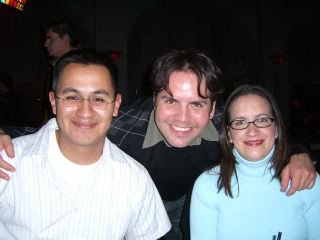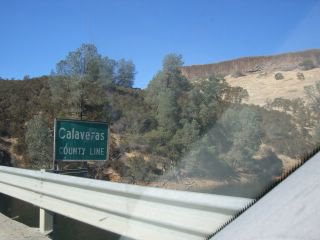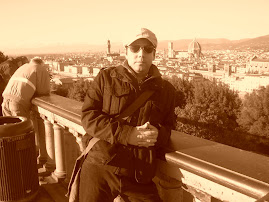
For those that are wondering what gasoline prices are like in Southern California at the end of 2005, well here is your reference for the price per gallon. ARCO is a subsidiary of British Petroleum (BP).
But before you complain or criticize the oil industry, read the New York Times article below by Danny Hakim on how Willie Nelson is dealing with the situation.
December 30, 2005
Beyond GasolineHis Car Smelling Like French Fries, Willie Nelson Sells Biodiesel
By DANNY HAKIM
Willie Nelson drives a Mercedes.
But do not lose faith, true believers. The exhaust from Mr. Nelson's diesel-powered Mercedes smells like peanuts, or French fries, or whatever alternative fuel happens to be in his tank.
While Bono tries to change the world by hobnobbing with politicians and Sir Bob Geldof plays host to his mega-benefit concerts, Willie Nelson has birthed his own brand of alternative fuel. It is called, fittingly enough, BioWillie. And in BioWillie, Mr. Nelson, 72, has blended two of his biggest concerns: his love of family farmers and disdain for the Iraq war.
BioWillie is a type of biodiesel, a fuel that can be made from any number of crops and run in a normal diesel engine. If it sounds like a joke, a number of businesses, as well as city and state and county governments, have been switching their transportation fleets to biodiesel blends over the last year. The rationale is that it is a domestic fuel that can provide profit to farmers and that it will help the environment, though environmentalists are not universally enthusiastic about it.
"I knew we needed to have something that would keep us from being so dependent on foreign oil, and when I heard about biodiesel, a light come on, and I said, 'Hey, here's the future for the farmers, the future for the environment, the future for the truckers," Mr. Nelson said in an interview this month. "It seems like that's good for the whole world if we can start growing our own fuel instead of starting wars over it."
In some ways, it is a return to the origins of the diesel engine; some of Rudolf Diesel's first engines ran on peanut oil more than a century ago.
Last week, a cargo-loading company that operates in the Port of Seattle said that to fuel its equipment next year it would purchase 800,000 gallons of biodiesel, most of it a blend known as B20 that is 80 percent conventional diesel. As of late September, Minnesota requires almost all diesel fuel sold in the state to be 2 percent biodiesel, and Cincinnati started using a 30 percent biodiesel blend, B30, in its city buses because of concerns about fuel shortages after Hurricane Katrina.
Biodiesel can cost as much as a $1 a gallon more than regular diesel when pure, though it is typically sold as B20. Prices vary depending on volume and region, and new tax incentives are aimed at closing the cost gap. BioWillie was selling for $2.37 a gallon yesterday in Carl's Corner, Mr. Nelson's own truck stop in Texas that serves as headquarters of his year-old company, Willie Nelson BioDiesel. That was just 4 cents more than the conventional diesel selling at another station nearby.
Mr. Nelson's BioWillie is aimed mostly at truckers and is usually sold as B20 (pure biodiesel can congeal in colder climates). BioWillie is currently sold at 13 gas stations and truck stops in four states (with Texas having the most), and it fuels the buses and trucks for Mr. Nelson's tours.
If BioWillie demonstrates anything, it is that the combination of Middle East wars, global warming and rising prices at the pump has led many people to offer solutions to the world's energy's squeeze. Depending on whom you ask, cars will someday run on hydrogen, electricity, natural gas or ethanol.
Mr. Nelson is making his bet on biodiesel.
"I don't like the war," he said in the interview. "In fact, I don't know if you ever remember a couple years ago, it was Christmas day, and my son Lukas was born on Christmas Day, he's like 16 years old, and we were watching TV and there was just all kind of hell breaking loose and people getting killed and I was talking to my wife, Annie, and I said, You know, all the mothers crying and the babies dying and she said, 'Well, you ought to go write that.' "So I wrote a song called 'Whatever Happened to Peace on Earth?' "
He began to recite the first verse:
So many things going on in the world,
Babies dying, mothers crying.
Just how much oil is human life worth?
And whatever happened to peace on earth?
"That upset a lot of people, as you can imagine," he continued. "I've been upset about this war from the beginning and I've known it's all about oil."
Every alternative to oil, however, has its drawbacks. Biodiesel would reduce most emissions of smog-forming pollutants and global warming gases, and it could be used instead of foreign oil. But some studies show that it increases emissions of one harmful pollutant, nitrogen oxide, and it could not be produced in vast enough quantities to supplant oil-based fuel, or come close to it, unless the nation starts turning the suburbs over to farmland. And as with ethanol, producing great quantities of biodiesel from corn or soybeans could drive up food prices.
Bill Reinert, Toyota's national manager for advanced technologies, said in an interview this year: "I frankly don't see biodiesel being an early alt-fuel player across a wide swath of geography. It's a boutique fuel. There's not enough payoff and not enough people into it."
Peter J. Bell, the chief executive of Distribution Drive, a distributor of biodiesel that is working with Mr. Nelson, said of the nation's nearly 200,000 gas stations, "650 carry biodiesel, so we have a job in front of us." Mr. Nelson sits on the board of Distribution Drive's parent, Earth Biofuels, a publicly traded company.
Daniel Becker, the Sierra Club's top global warming expert, said he would prefer to see wider use of a cleaner alternative fuel, like natural gas.
Referring to biodiesel, he said, "In order to grow soybeans, you need multiple passes over the field with diesel tractors, you need a lot of fertilizer that's energy intensive to produce and, at the end of the day, you have a product that is no boon for the environment."
He went on: "If you're going to go to the trouble of using an alternative fuel, use a good alternative fuel. If you really want to listen to Willie Nelson, go buy one of his records and play it in a hybrid."
Mr. Nelson first heard about biodiesel two years ago from his wife while they were staying in Hawaii. He recounted the story.
"My wife came to me and said 'I want to buy this car that runs on biodiesel, and I said, 'What's that?' And so she told me, and I thought it was a scam or joke or something. So I said, 'Go ahead, it's your money.' "
She bought a Volkswagen Jetta with a diesel engine and started filling it with fuel made from restaurant grease. This is not uncommon. Home hobbyists make their own biodiesel by collecting used grease from restaurants and chemically treating it to turn it into usable fuel, or by outfitting their car or truck with equipment to re-form the grease.
"I drove the car, loved the way it drove," Mr. Nelson said. "The tailpipe smells like French fries. I bought me a Mercedes, and the Mercedes people were a little nervous when I took a brand new Mercedes over and filled it up with 100 percent vegetable oil coming from the grease traps of Maui. I figured I'd be getting notices about the warranty and that stuff. However, nobody said anything."
"I get better gas mileage, it runs better, the motor runs cleaner, so I swear by it," he added.
How far does he think biodiesel can go?
"It could get as big as we can grow fuel or find different things to make fuel from, such as chicken fat, beef fat, add that along to soybeans, vegetable oils, peanuts, safflower, sunflower," Mr. Nelson said.
O.K.. What about hemp?
"Hemp is a very good one," he replied, not missing a beat. "In fact, several years ago, a friend of mine named Gatewood Galbraith was running for governor of Kentucky and we campaigned all over the state of Kentucky in a Cadillac operating on hemp oil. He was trying to get it legalized in the state of Kentucky and, of course, he lost, but the cannabis thing in fuel is a very real thing."
Mr. Nelson said he did not expect to make much money on his venture. As he put it when asked about his Mercedes, "I didn't get it selling BioWillie, I'll tell you."
"I hope somebody makes money out of it; I'm sure they will. And probably what'll happen is that the oil industry will wait until everybody else builds all the infrastructure and then they'll come in and take over," he said. "But that's O.K. I don't worry about that. As along as the idea progresses because all I'm caring about is getting it out there and maybe helping the country, the farmer, the environment."
Asked if he intended to become a fat cat C.E.O. with a big cigar in his mouth, he replied: "I'll give you my part of it. I'll just sign over all my earnings and belongings to you right now and I'll sing 'Whiskey River.' "
One thing is certain: if Mr. Nelson's venture makes any money, none of it will go to pay a $16 million tax bill to the Internal Revenue Service. That debt, which arose from Mr. Nelson's participation in illegal tax shelters, was erased in 1993 with surrender of some property and the profit from his album "The IRS Tapes: Who'll Buy My Memories?"

































